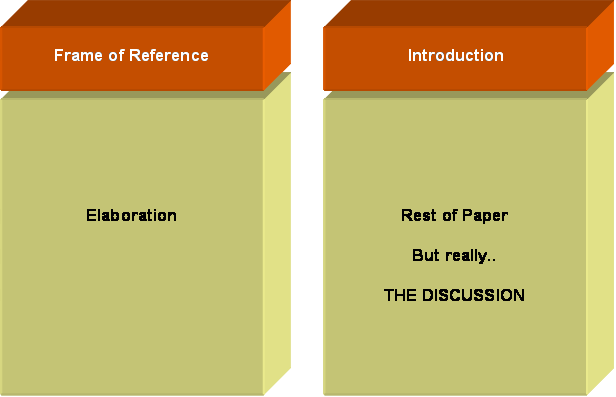The Science Of Scientific Writing Set I The paper as a whole Coherence: The thread problem et al. Exercise 1 Final Page .
OVERVIEW: The way to well-written science
PART I: Paragraphs and Sentences
SET A: Paragraphs: The Maps Behind Them
SET B: Paragraphs: Using Maps to Meet Readers' Expectations
SET C: Paragraphs with Something Extra: Points and Tails
SET D: The Generic Section: Expectations and Maps as Blueprints
SET E: Scientific Sections: The Methods and Results
SET F: Scientific Sections: The Discussion
SET G : Scientific Sections: The Introduction
SET H : Sentences
SET I : The Paper as a Whole
PART II: The Paper and its Sections
SET 1: Argument Parts
SET 2: Indicator Words
SET 4: Locating Arguments in Prose
SET 5: Rationale's Essay Planner
SET 6: Evidence in Arguments: Basis Boxes
Synthesis 1: Position-Early Paragraphs
Synthesis 2: Position-Final Paragraphs
Synthesis 3: Writing a Discussion I
Synthesis 4: Writing a Discussion II
Expectations of the paper as a whole
 In Set H we saw that readers expect sentences to comply with the Frame of Reference + Elaboration pattern that is also expected in paragraphs and Sections. In this Set we will see that this expectation also applies, as might be expected, to the paper as a whole. Thus, with respect to this most basic aspect of text structure, the scientific paper has, like many natural structures, a fractal organisation. The pattern of the whole is reflected in the pattern of the component parts, at all levels of scale. This is a natural consequence of the fact that, at all levels of a text, the information is revealed gradually to the reader in piece-meal, linear fashion.
In Set H we saw that readers expect sentences to comply with the Frame of Reference + Elaboration pattern that is also expected in paragraphs and Sections. In this Set we will see that this expectation also applies, as might be expected, to the paper as a whole. Thus, with respect to this most basic aspect of text structure, the scientific paper has, like many natural structures, a fractal organisation. The pattern of the whole is reflected in the pattern of the component parts, at all levels of scale. This is a natural consequence of the fact that, at all levels of a text, the information is revealed gradually to the reader in piece-meal, linear fashion.
The other main feature that readers expect at each level of text structure is our old friend, coherence. In Set I we will also consider how to make the paper as a whole more coherent.
In terms of the paper as a whole, the Frame of Reference role is, unsurprisingly, played by the Introduction section. For the Elaboration, in one sense the entire remainder of the paper plays this role, but, in truth, readers expect that the Discussion section will function independently as an intelligible companion piece to the Introduction. Thus despite being much-separated by the Results section, and typically by the Methods section also, the reader expects that the Introduction and Discussion sections will form a coherent whole.

The structural suggestions made in this course for the Introduction and Discussion are meant to ensure that not only will be they make sense in isolation, but they will indeed operate together coherently. The most important "meshing" feature is indicated by the connection made by the blue arrow in the diagram below:

The arrow connects the Framing Sentences for each of the sections, i.e.
* In the Introduction, the sentence that states (at the very conclusion of the Frame of Reference part) the Specific Research Question of the paper.
* In the Discussion, the sentence that states (at the very conclusion of the Frame of Reference paragraph) the answer to the Specific Research Question of the paper.
An illustrative example of this approach is shown below, with only the final sentence of the Introduction's second paragraph included:

Of course, by adopting this approach, not only will you ensure the paper works for your readers, but you will have a ready-made template that keeps your own thought processes on track.
......